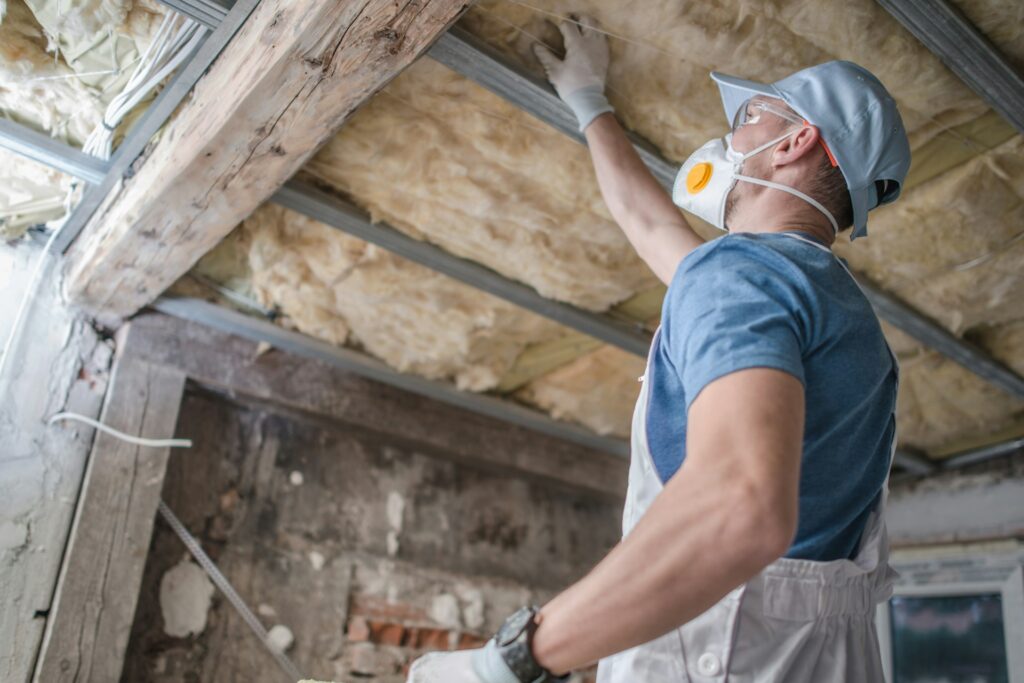Insulation plays a vital role in keeping your home comfortable and energy-efficient. However, old or damaged insulation can cause more harm than good. Over time, insulation materials can break down, become contaminated, or lose their effectiveness. Removing old insulation and replacing it with new, high-quality materials is crucial for maintaining a healthy and efficient home environment.
One of the main reasons to consider insulation removal is the potential health risks associated with outdated materials. Insulation can harbor mold, dust, and even pests, which can affect the air quality inside your home. By getting rid of old insulation, you reduce these risks and contribute to a cleaner, healthier living space for your family.
Another important factor is energy efficiency. Worn-out insulation doesn’t perform as well, leading to higher energy bills and a less comfortable home. Removing and replacing this old insulation can improve your home’s ability to retain heat in the winter and stay cool in the summer. This not only makes your home more comfortable but also helps you save money on energy costs.
In addition to health and energy concerns, proper insulation removal has environmental benefits. Old insulation materials can often be recycled or disposed of in ways that minimize environmental impact. By taking the time to remove and replace insulation properly, you’re making a positive choice for both your home and the planet.
Health Risks of Old or Damaged Insulation
Old or damaged insulation can pose several health risks to you and your family. One of the main concerns is the presence of mold. Over time, insulation can become damp due to roof leaks, high humidity, or condensation. This moisture creates an ideal environment for mold to grow. Mold spores can get into the air and be inhaled, leading to respiratory issues, allergies, and other health problems.
Dust and debris are also common in old insulation. As insulation materials break down, they can release tiny particles into the air. These particles may contain harmful substances like asbestos or fiberglass, which are dangerous when inhaled. Continuous exposure to these particles can cause long-term health issues, including lung disease and skin irritation.
Pest infestations are another potential risk. Rodents and insects often find their way into old insulation, using it as a nesting material or food source. These pests can carry diseases and leave droppings, urine, and other contaminants in the insulation. Removing old, infested insulation and replacing it with new materials can significantly reduce these health hazards, providing a safer environment for your family.
How Insulation Removal Can Improve Energy Efficiency
Removing old and damaged insulation can greatly enhance your home’s energy efficiency. Over time, insulation materials lose their effectiveness due to settling, damage, or contamination. This means your HVAC system has to work harder to maintain a comfortable temperature, leading to higher energy bills. By replacing old insulation with new, high-quality materials, you can reduce the strain on your heating and cooling systems.
New insulation performs better because it fits more snugly and provides better coverage. This helps to create a more effective barrier against heat loss in the winter and heat gain in the summer. Better insulation means your home stays warmer in the winter and cooler in the summer, leading to lower energy consumption and cost savings.
Another way insulation removal improves energy efficiency is by sealing gaps and cracks during the replacement process. Professionals often seal air leaks around windows, doors, and vents when they remove and install new insulation. This ensures that conditioned air stays inside your home and unconditioned air stays outside, further improving your home’s overall efficiency.
In addition, modern insulation materials are designed to be more energy-efficient than older types. They offer better thermal resistance and can sometimes include reflective properties that enhance their insulation performance. By updating your insulation, you can take advantage of these advancements, making your home more energy-efficient and comfortable year-round.
Environmental Benefits of Proper Insulation Removal
Removing old insulation and replacing it with eco-friendly options offers several environmental benefits. One major advantage is the reduction of waste. After carefully removing old insulation, many components can be recycled instead of ending up in a landfill. This helps to minimize our environmental footprint and supports sustainable practices.
Another benefit is the use of environmentally friendly insulation materials. Modern insulation options often consist of recycled or natural materials that are both effective and gentle on the environment. These materials not only perform better but also reduce our reliance on synthetic products that can harm the planet.
Improved energy efficiency through proper insulation also has positive environmental impacts. By reducing the amount of energy needed to heat or cool your home, you decrease your home’s overall energy consumption. Lower energy usage means fewer greenhouse gas emissions, which contribute to climate change. By upgrading your insulation, you help to protect the environment while enjoying a more comfortable home.
Steps to Take When Removing Old Insulation
Properly removing old insulation involves several important steps to ensure safety and efficiency. Here’s a straightforward guide to follow:
1. Assess the Condition:
Begin by inspecting your attic or crawlspace to determine the state of the current insulation. Look for signs of mold, pest infestation, or water damage.
2. Gather Necessary Equipment:
Prepare by gathering the right tools and protective gear. You’ll need masks, gloves, goggles, and sturdy clothing to protect yourself from harmful particles.
3. Seal the Area:
Before starting, seal off the area to prevent dust and debris from spreading to other parts of your home. Use plastic sheeting and tape to create a barrier.
4. Remove the Old Insulation:
Carefully remove the insulation using appropriate tools. For loose-fill insulation, a commercial-grade vacuum may be necessary. For batts, gently roll and bag them for disposal.
5. Clean the Area:
Once all the old insulation is removed, clean the area thoroughly. Look for and address any underlying issues like leaks or mold growth.
6. Prepare for New Insulation:
Before installing new insulation, make sure the space is dry and free of debris. This ensures the new insulation will perform at its best.
Final Thoughts
Proper insulation removal is crucial in maintaining a healthy, energy-efficient, and environmentally friendly home. By addressing the health risks of old or damaged insulation, you protect your family from potential respiratory issues and other health problems. Improving energy efficiency through new insulation helps save on energy bills and makes your home more comfortable throughout the year. Environmentally conscious removal and replacement strategies also contribute to a more sustainable future.
Ensuring the removal process is done correctly involves a detailed inspection, proper preparation, and the use of the right tools and protective gear. Addressing any underlying issues before installing new insulation guarantees the best performance for years to come. This comprehensive approach to insulation removal not only enhances your home environment but also supports broader environmental goals.
Contact All Thermo today if you’re ready to improve your home’s insulation and reap these benefits. Our experienced team is here to guide you through the process, ensuring a job well done from start to finish. Contact us now to schedule an assessment and take the first step towards a healthier, more efficient home.

